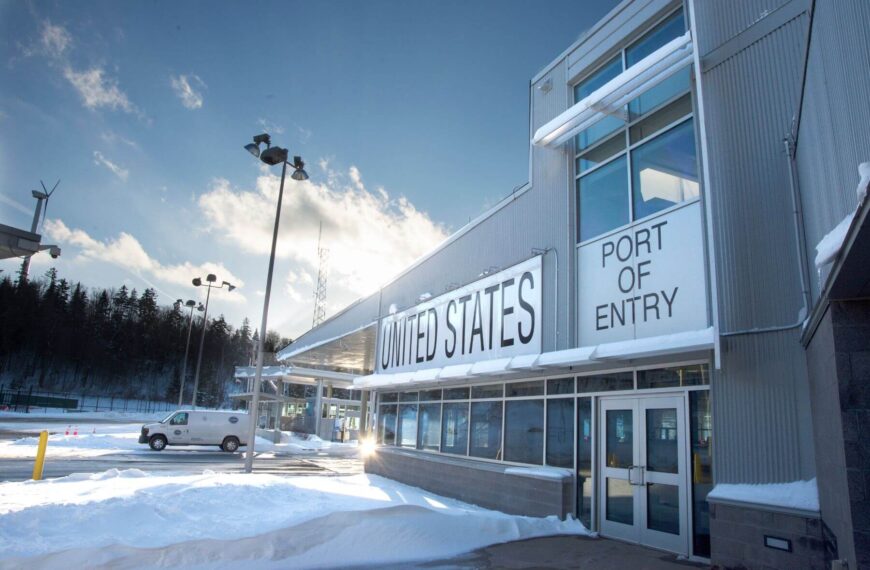Africa and Asia together account for over 90 per cent of total child employment. India has 10.12 million child labourers (Census 2011), aged between 5 to 14 years, and nearly half of them are girls. Dr Mohanlal tells us the about the advocacy and initiatives of PVCHR that helped in empowering children. This, in turn, gave them the necessary child right. Here’s the Light to the obfuscating problems of child labour that might be replicated. This is a part of Different Truths special feature on World Day Against Child Labour (WDACL).
#WorldDayAgainstChildLabour2016 #WorldDayAgainstChildLabour #WDACL #ILO
Every year June 12 is observed as the World Day Against Child Labour (WDACL). Child labour, as a critical social problem, is prevalent all over the world, especially in developing countries. Africa and Asia together account for over 90 per cent of total child employment. India, a projected super-power in the world, has the blot of having highest numbers of child labour. According to Census, 2011, India has 10.12 million child labourers, aged between 5 to 14 years, and nearly half of them are girls. The major occupations engaging child labour are paan (betel leaf), bidi and cigarettes (21%), construction (17%), domestic workers (15%) and spinning & weaving (11%). As per the National Family Health Survey (NFHS -3), 2005-06, nearly 11.8% children age 5-14 years worked either for their own household or for somebody else.
The very young children (age 5-7 years), both boys and girls, are mainly doing unpaid work for someone, who is not a member of their household. The older boys age 12-14 are mainly engaged in paid work or family work, whereas girls in the same age group are involved mainly in household chores or family work. According to the International Labour Organisation (ILO), “Born to parents, who themselves were uneducated child workers, many child worker are forced to continue a tradition that leaves them chained to a life of poverty” (ILO, United States Policies to Address Child Labor Globally, 2010).
Under extreme economic distress, children are forced to take up employment that is mostly exploitative as they are usually underpaid and engaged in hazardous conditions. Parents send their children for work as a desperate measure to prevent hunger deaths in their family. Child labor is gruesome exploitation and violation of Child Rights.
People’s Vigilance Committee on Human Rights (PVCHR) has been working on issues of child labour, especially those in labour bondage for the last two decades. This paper highlights the child-centric interventions based on child rights carried out by PVCHR in various villages of Varanasi. The unique aspect of this intervention was the approach to view the problem of child labour based on the framework of Child Rights as given by the United Nations.
In 1992, India ratified the United Nations Convention on the Rights of the Children (UNCRC). It envisages that all children are born with fundamental rights and categorises the rights of the child into four broad and interrelated domains:
- Right to Survival
- Right to Development
- Right to Protection
- Right to Participation
PVCHR began the baseline data collection from villages and analysed the information obtained in the Child Rights framework.
Children of many Dalit families were engaged in brick kilns of upper caste perpetrators and several others were working in crop fields along with their parents in labour bondage and some others are helping their parents in sari-weaving. The problem of child labour was rampant in the villages of Varanasi and causal factors were multi-layered. Child labour as a social challenge was deeply linked to the caste dimensions. Invariably children of Dalits were involved in child labour, especially labour bondage. In weaver families, children were engaged in extremely exploitative conditions while parents were rendered unemployed and without any work.
In Dalit and deprived families, children, as equal partners, bear the brunt of caste based discrimination. When the family is excluded and marginalised and denied access to basic civic amenities, children turn into labourers and struggle hard for survival and they are the first ones to die in starvation. More often than not, they quickly imbibe the caste imposed inferiority and throughout their life adhere to expected caste-norms and practices.
These working children were out of school, denied Right to Education. They were malnourished. Hunger deaths were common feature of their families. They were denied basic healthcare services, such as immunisation by ANMs due to the practice of untouchability. These children were denied access to anganwadi centres and other nutritional programs. Living in deplorable conditions, these children were often physically and sexually abused.
After identifying areas of violations to child rights, interventions were chalked out with rights based approach.
Ensuring Right to Survival
Children involved in labour bondage were by and large severely malnourished. Many of them died of hunger. Deaths of children due to hunger and starvation are ultimate violation of child right to survival. Malnutrition is a silent killer. And one could hardly find any child from Dalit community, who was well-nourished. Further, practices of caste discrimination did not leave neonates, infants and children from its wrath. There were health functionaries like ANM, ASHA and anganwadi workers, from upper caste, who preferred to remain ‘pure’ and did not ‘touch’ Dalit children for immunisation or health checkup. Their practice of ‘untouchability’ took lives of many children and their mothers. This apart, most children in Dalit families did not have birth certificate, which was taken as the denial of their right to identity.
PVCHR’s Administrative Advocacy:
To ensure food security, PVCHR did administrative advocacy to deal with the apathy of state machinery. It protested and advocated for action by appealing to the Supreme Court and National Human Rights Commission. It created pressure on the government to act by involving international human rights organisations and media in the war against malnutrition and hunger deaths. Alongside, PVCHR prepared a list of Dalit and impoverished families not having ration cards, submitted applications for each individual family devoid of ration card to village panchayat, BDO, ADO, DM, Scheduled Caste Commission and adequate action (that is, making of red cards so as to claim subsidised food grains under Antodaya Anna Yojana) was demanded promptly.
Ensuring transparency from the system resulted in realisation of Right to Survival to children engaged in labour.
Next, denial of free and quality education is taken as violation of child right to development and most of the Dalit children were working in factories, crop-fields, handloom industries, etc. and they were obviously out of school. Moreover, Dalit children were denied enrollment in schools where children of upper caste were studying; girl children asked to stay at home and care for their younger siblings; children of weavers asked to help in weaving saris, and children of bonded laborers were made to slog at brick kilns or agricultural fields.
In one of the sites of interventions – Belwa village, the only school in the vicinity of upper caste residents was not approachable to Dalit children due to caste based discrimination. PVCHR engaged in advocacy and social action with the issue of establishment of school in the proximity of Dalit ghettos, and after six years of continuous struggle, a school was established. In other villages, education department of the state government was pressurised to hold enrollment drives under Right to Education.
Once, children were enrolled in schools, child labour was, and is, prevented. Community monitoring was ensured and a system was created to regularly hold parent teacher meetings. To ensure retention, attendance of children is closely monitored. And absent children are contacted to find reasons. The committee regularly provides feedback on the functioning of school in community meetings.
Further, as a part of ensuring right to protection, and banning child labor, PVCHR worked on activation of Mahatma Gandhi National Rural Employment Guarantee Act so that parents get the employment and children are spared for schooling. Land allocation to landless families was another intervention to indirectly preventing child labour.
Specifically, on abolition of child labour, PVCHR did baseline survey and prepared a list of children engaged into labor. Talks with parents of child labour were held. In community meetings children of Bal Panchayats (children’s parliament) displayed the caustic implications of children in work instead of availing benefits of education. Reasons for child labour were found out, which invariably was poverty and lack of any other sources of earning for the family. Parents were linked to Mahatma Gandhi National Rural Employment Guarantee Act and Targeted Public Distribution System. They were motivated to send their children to school and not for work. A list of such children was given to school teacher and asked to connect them with schools. This apart, children in bondage at brick kilns were freed along with their families.
Bal Panchayat (children’s parliament) has emerged as an effective medium for empowering children by involving them in decisions about their welfare and other matters. Modeled on the concept of Gram Panchayats, the Bal Panchayat comprises eight to sixteen members (who are children), has a president and a secretary elected by the children of the respective village. PVCHR has established Bal Panchayats in several villages of Varanasi district, Uttar Pradesh.
The purpose of these Bal Panchayats is to make children conscious of their rights and encourage their participation in addressing issues such as child marriage, education, cleanliness of villages and health facilities. These children, in turn, have been instrumental in making adults aware of their responsibilities.
With help from PVCHR, these Bal Panchayats have been successful in achieving the objectives of Sarva Shiksha Abihyan (Education for All) and in improving the standards of education in several villages. They have played crucial role in reducing the dropout rates in neighborhood schools. Bal panchayats have also helped prevent child marriages. They have also ensured that more children enroll in schools, especially among girl children.
Bachchon ki Dunia (Children’s World) is a child magazine that is almost completely managed by Bal Panchayats. Children contribute articles, poems, stories, cartoon scripts, on socially relevant issues in their magazine. The magazine provides scope to creative expression and fulfillment to children, as envisioned in the Child Right to Participation.
The members of Bal panchayat played important role in ensuring that their ‘model’ village is free from the problem of child labour. Through street plays, awareness rallies, wall-writings, posters, slogans, children made the inhabitants of their respective villages aware of the menace of child labour. Strict adherence to right to education for all children was followed. The change agents helped in identifying the children working as labourers and persuaded their parents to send them to school and not for work. With the initiative of Bal panchayat, four children in a Nat family, working as labourers, were admitted to a school in Belwa. Several more achievements of this kind are to the credit of Bal Panchayats. Thus, investing on child rights and ensuring a conducive environment where every child enjoys rights would lead to a more democratic and just social order.
©Dr. Mohanlal Panda






 By
By

 By
By
 By
By